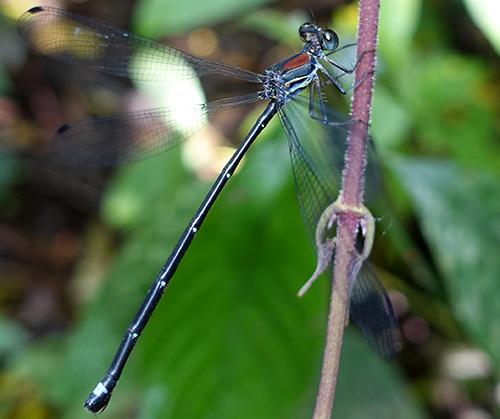Cornelio Andrés Bota Sierra
Other projects
14 Jun 2016
Variability in Temperature Resistance among a Tropical Mountain Community of Dragonflies: Implications for Arthropod Dispersal Limitation in a Warming World
We plan to continue working on the two major objectives of our past project understanding how climate change is going to affect the tropical mountain dragonfly communities and helping the local people to protect and appreciate the greatest diversity that surrounds them. We will replicate the environmental education activities conducted outside the Tatamá NP, including painting a mural with the regional history and natural richness. And, in the ecophysiological area, we will change the methodology of the experiments to minimize the stress and measure more realistic situations, we will measure the thermal performance curves for breathing for larvae and adults of the dragonfly community at the Tatamá altitudinal gradient, which will allow us to provide a more accurate vulnerability index to climate change.

Philogenia martae, one of the beautiful endemic species of damselflies in Santa Cecilia region described as part of the results of the first phase. ©C. B
We plan to show to the Santa Cecilia community the great biological richness they are surrounded by, so they can protect it and profit from it in a sustainable way. We will begin with workshops with the ecological association they have (ASOAFA), where we expect to generate a respect and appreciation for nature, through the reflection on different topics as biodiversity, ecological niche, environmental services, sustainability, among others. We will finish these series of workshops with the intervention of the town with mural paintings in which we are going to illustrate Santa Cecilia`s Natural and social history with the help of the artist collective BioGraphos. Finally, we hope this will empower the community gradually transforming them into guardians of these ecosystems.
In parallel, we will keep exploring the dragonfly community at Santa Cecilia and surrounding areas, we plan to measure curves of the basal oxygen consumption performance vs temperatures in both adults and larvae of dragonflies. These curves give high-quality information, we can determine the maximal and minimal CTs, and also optimal performance ranks which are key information to understand how populations will be affected by climate change. For example, we can find the optimal oxygen consumption range which will allow us to make an index of vulnerability to climate change: having in mind the predicted increase of temperatures in the coming years and calculating the difference between the optimal rank of oxygen consumption temperatures and the actual temperature in the habitat the dragonfly use. Therefore, we can predict if global warming will affect its population reducing the time of activity along the day or if it will increase enough to surpass the population thermal limit, giving it just three options: to adapt to the new conditions, to track their current conditions, or to go extinct.
Finally, two out of the 50 species of dragonflies we recorded for Santa Cecilia during the 2016-2017 season remain as undescribed species, and 20 have undescribed larvae; the description of new species is essential for most of the biological sciences. We plan to describe them in a series of taxonomic papers.